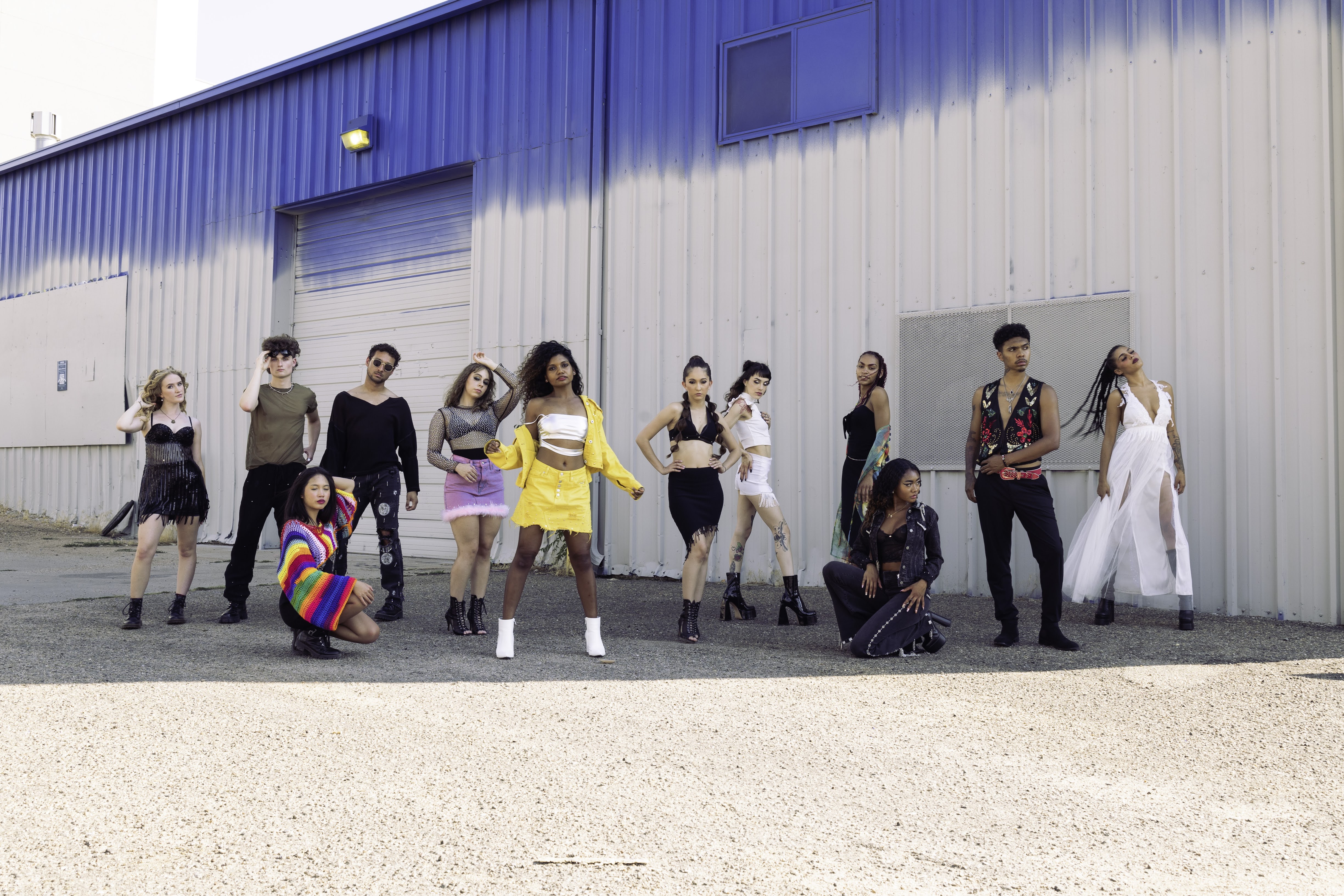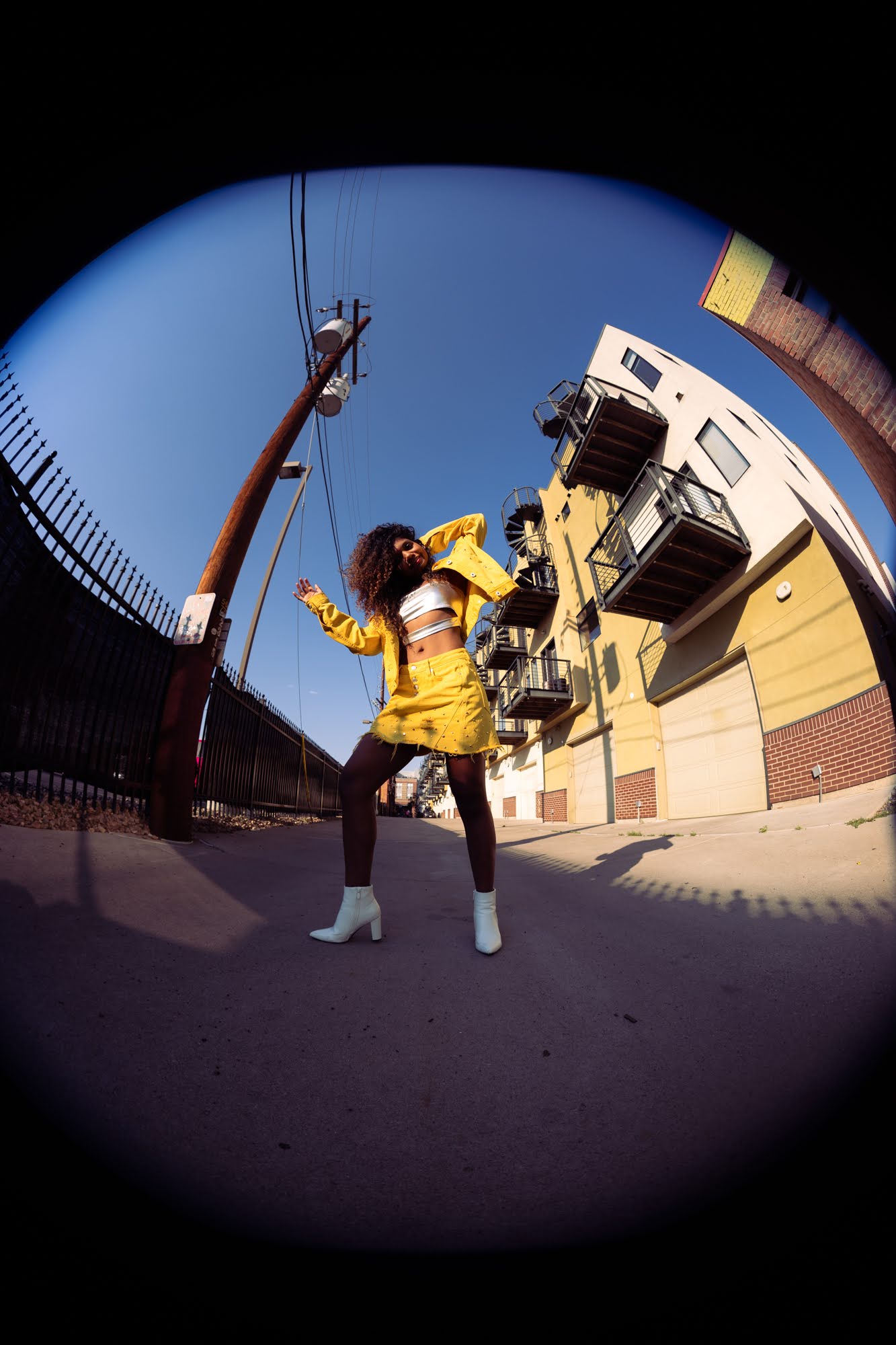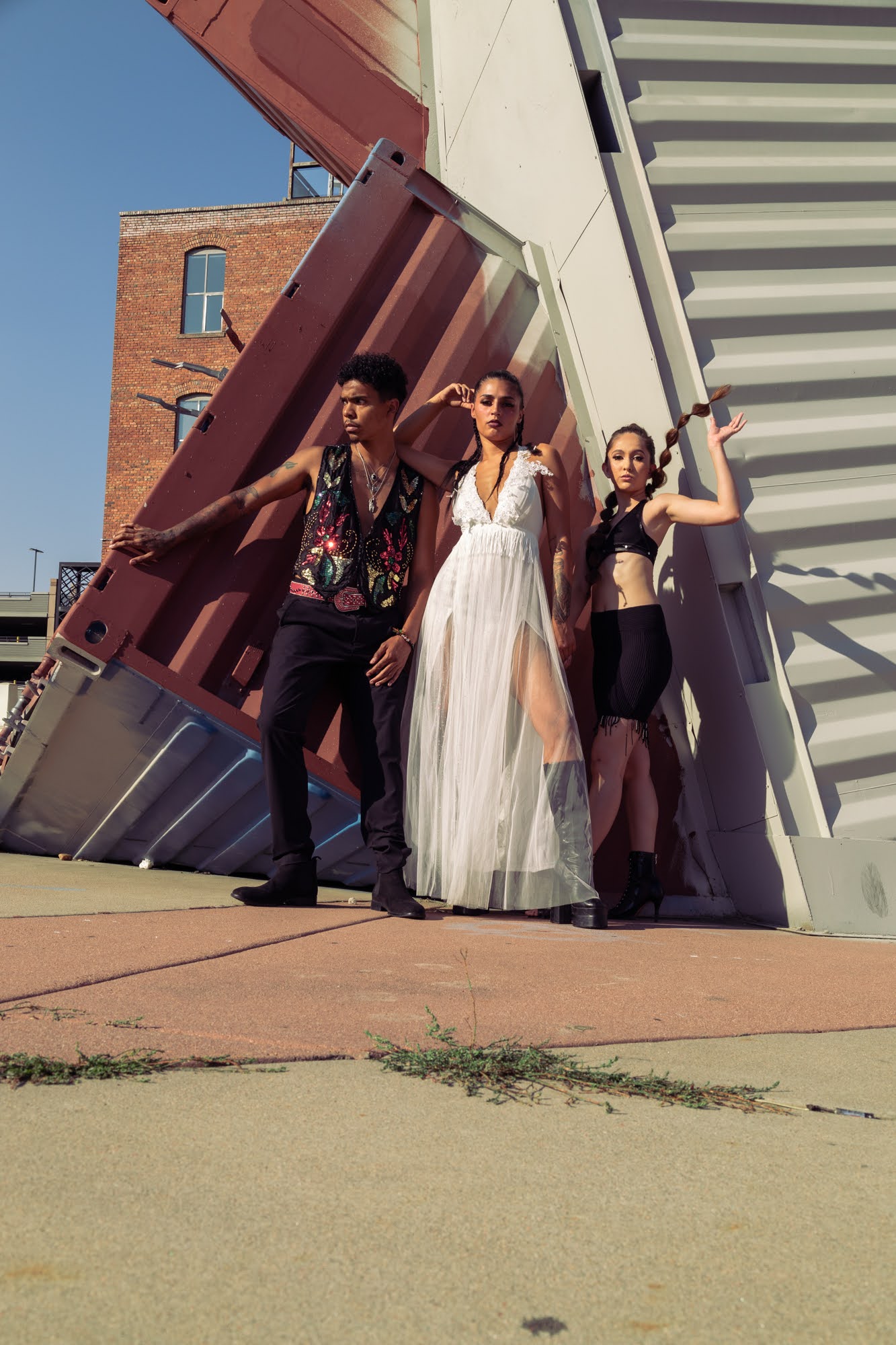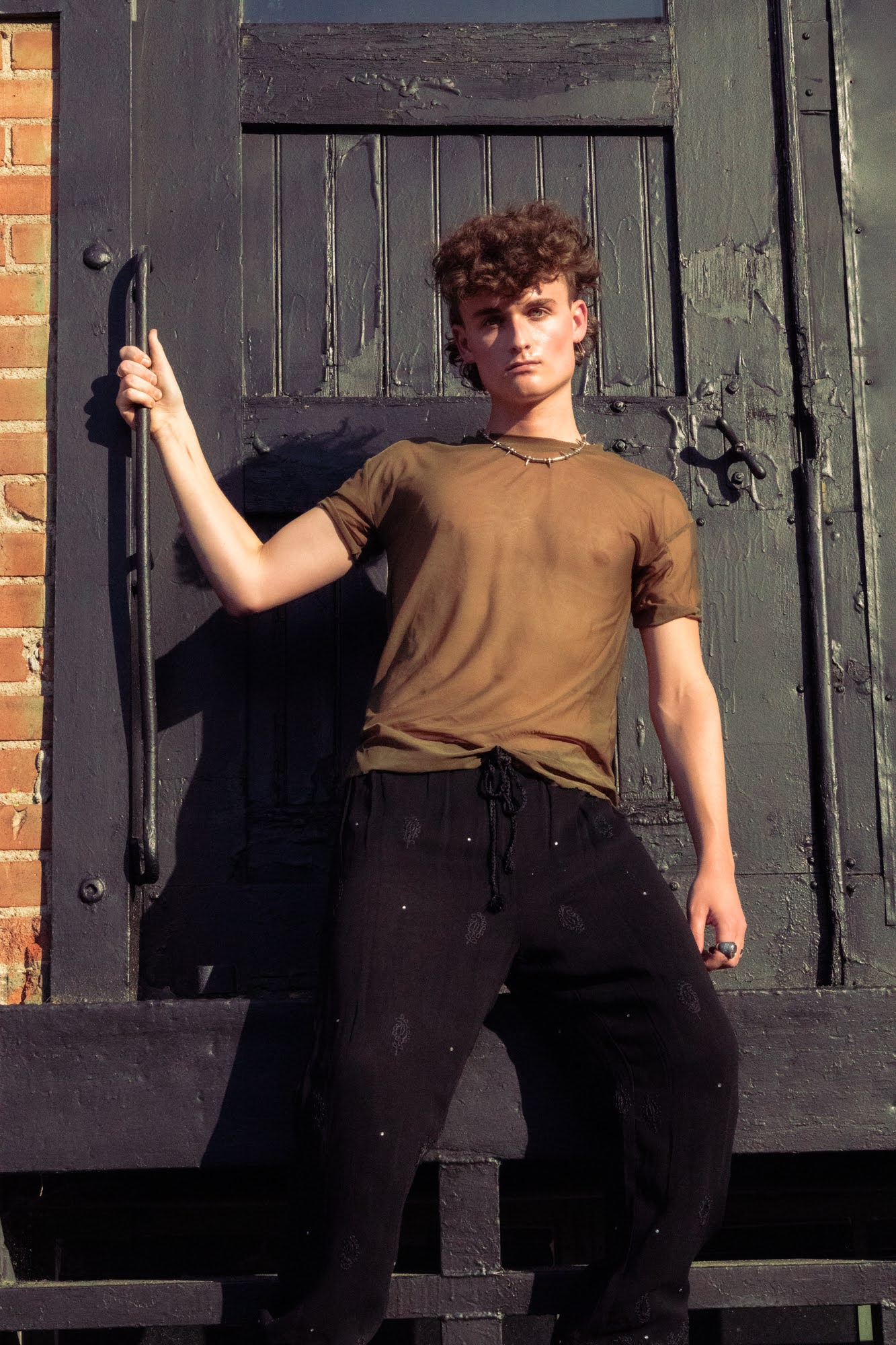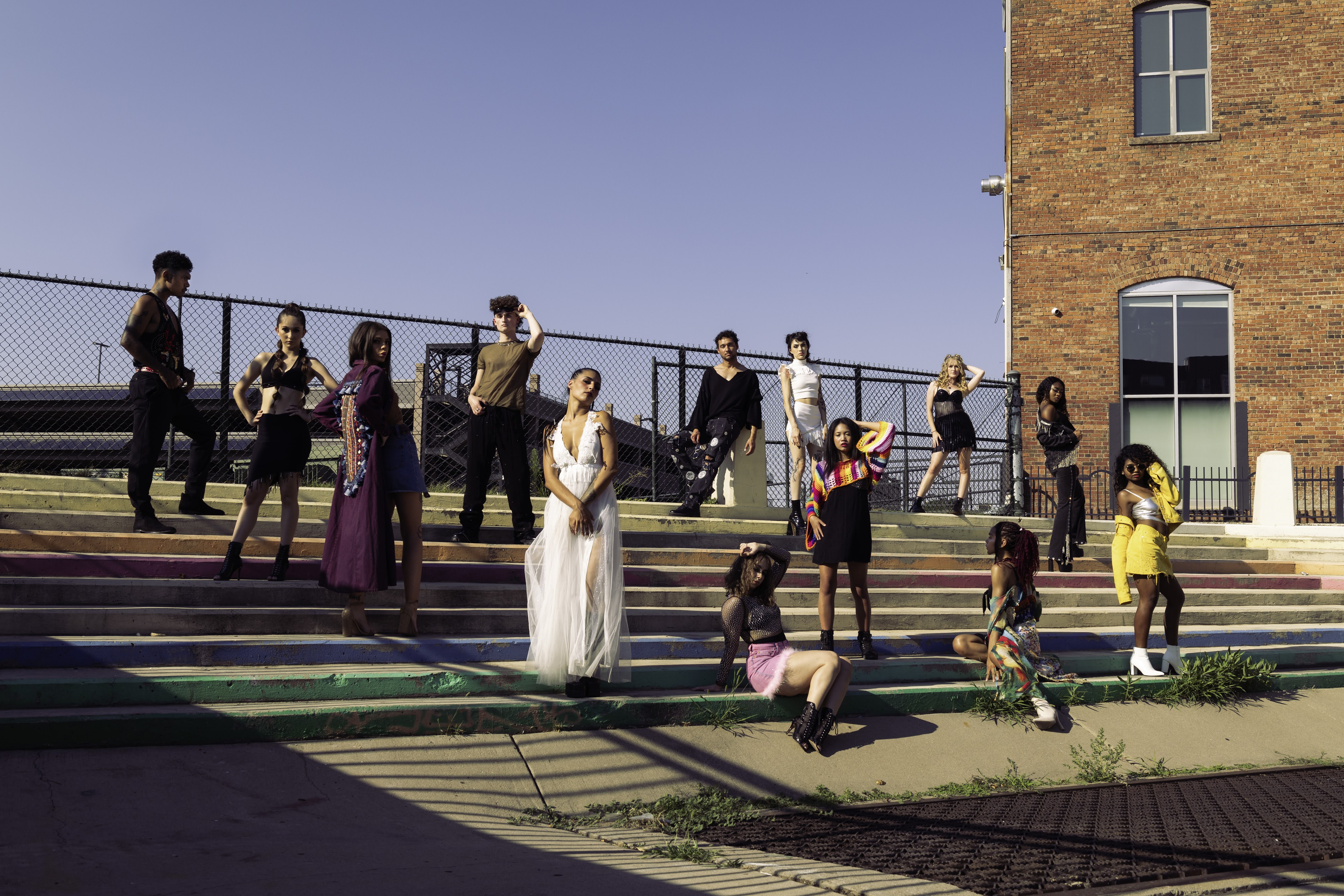Overconsumption is a pressing issue in our culture and the world and a significant contributor to environmental degradation. Rachel Hazelwood, the designer of sustainable brand Hyacinth, is an expert in finding sustainable and fashionable solutions to these problems.
303 Magazine sat down with the designer to discuss the alarming impact of overconsumption on the environment, the complexities behind our waste, and possible answers to this seemingly never-ending cycle.
“Americans are champions at mass production and buying because instant gratification is warranted in this country,” Hazelwood stated.
Fast Trends, Lasting Impact
This instant-gratification culture has given rise to “fast fashion,” a term describing inexpensive clothing produced rapidly in mass markets in an attempt to keep up with the latest trends. It’s characterized by its quick turnover of styles and low production costs, often at the expense of ethical and sustainable practices. Hazelwood pointed out that popular sites like Amazon and Shein are testaments to our culture’s drive for instant gratification.
“We see something we want and get it immediately,” she said.
When a trend emerges, it’s only a matter of time before the next big thing replaces it. Yet, looking at these trends from a bird’s-eye view, they often recall a time when quality was paramount. This cyclical nature of fashion trends underscores the futility of chasing trends and the importance of investing in quality clothing that stands the test of time — promoting a more sustainable approach to fashion.
“More often than not, styles come full circle,” Hazelwood said. “When we don’t hold on to clothes or pass them through generations, it perpetuates the cycle of overconsumption.” This insight into consumer behavior underscores our significant role in perpetuating overconsumption, urging us to reconsider our habits.
Hazelwood also explained that some of these consumeristic cycles tend to reach more fashionable groups of people than others.
“It’s interesting to see people’s buying patterns regarding clothes,” she said. “Those who want to be trendy buy more consistently but at lower quality. However, traditional men’s fashion stays relatively constant, giving them more freedom regarding quality and budget.”
The designer also noted that this trend-driven consumer behavior isn’t limited to fashion.
“Cell phones aren’t made as well, cars aren’t made as well, things aren’t created to last your whole life anymore,” she said.
Materials & Care Matter
Hazelwood’s background in fashion has also developed her attention to detail like materials and garment care.
“My experience at Nordstrom Racks taught me the value of well-made items, even compared to most retail stores. The choice of materials and the care you give to your garments are crucial factors in ensuring their longevity,” Hazelwood stressed.
The designer explained how denim, silk, and other textiles can quickly deteriorate when not correctly cared for. Additionally, she mentioned the importance of checking the contents of a garment tag.
“Being more aware of our purchasing decisions is critical, as is flipping up clothing tags to learn the care instructions,” she said.
The designer noted that if you notice an item has a million things made up of things, it’s typically not as sustainable — “A good rule of thumb is things made of less are better for the environment,” she said.
She also noted that buying quality garments has become more challenging through the decades.
“When you look at vintage pieces and garments, you might notice they are heavier because they are quality made, which is why they’ve held up that long,” The designer said. “There won’t be many vintage pieces from the period we live in now because everything’s constructed very poorly.”
She also noted that many of these purchasing decisions are influenced by accessibility and the socioeconomic status of each person’s lifestyle.
“Some people wear nicer clothes, drive nice cars, and live in nicer houses. It’s what’s attainable for each lifestyle, and that will be different for everybody,” she explained.
Across the board, though, Hazelwood said the basis is still the same: Are you more often consuming for needs rather than excess? Beyond that, are you aware of how you can consistently minimize your environmental impact?
There are also “grey areas” when it comes to our sustainable efforts in fashion, such as buying fast fashion from thrift stores.
“Most people don’t want to pay for Shein or Amazon quality clothes at the bins, but when it’s leaving here, it’s going to a landfill,” she said.
Finding a purpose for almost any clothing, even those with deficient construction is where the genuinely circular moments are built — “I use lower-quality pieces for accent parts of clothing. We can include all of those thrifty finds, but it becomes difficult because you can’t be across the board expecting what people will consume,” The sustainable designer said.
Hazelwood’s deterrent against other designers creating “one-stop shops” comes from the understanding that customers will want different things at different times. She also described the hesitancy to buy fast-fashion at thrift stores as coming from the likelihood of uncovering higher-quality items in the bins: “It’s so exciting finding something that came from an excellent lived-in closet.”
Though sustainable shopping can often feel intimidating, the designer emphasized eco-friendly buying allows consumeristic imagination to flow through different avenues.
“Sometimes sustainability is lost when creating fun things, and sometimes fun is lost when creating sustainable things,” Hazelwood said “Both are important to creating something you and others will love. I try to think of all aspects, including a garment’s forever home before I spend time and resources building.”
Luxury and designer products could be a grey consumer blind spot. While the items are more expensive due to better quality materials and craftsmanship, spending thousands on one item still seems absurd. It’s unsurprising to feel completely different and excited when uncovering designer garb at a thrift store, though.
“I feel a little hypocritical when I get excited because it’s such a steal on something I would never wear full price,” she said.
Regarding ethical thrifting, Hazelwood said, “Keep your eyes out; you never know what you’ll find. Clothing will see you in a way, too. The best options aren’t always the latest and newest and most incredible.”
Innovative Materials & Choices
On the other hand, Hazelwood said it can be tricky to buy luxury while remaining mostly sustainable, but it is possible.
“I respect certain brands’ transparency and efforts, especially those focused on true, measurable developments rather than greenwashing their brands,” she said.
Hazelwood explained the complexities of buying from luxury brands that sell fur and leather. While there have been some conversations regarding the sustainability of animal skins when decomposing naturally in the environment, the local designer discourages everyone from buying new skins.
As far as avoiding leather altogether, Hazelwood said, “Leather is everywhere. There’s no escaping it. In my mind, if you’re going to be killing the animal anyway, don’t waste it as so many big companies do.”
The designer noted how Native Americans would often kill buffalos and use every single part of it, from making the tusks into tools and jewelry to eating all of the meat. Even as a self-proclaimed animal lover, she said some things are inevitable. With leather being so relevant in Western wear, workwear, furniture, and auto, the likelihood of it going away is slim to none.
“I wish we could use all vegan materials, but why waste textiles already here?” she said. Beyond upcycled leather and denim, the designer enjoys glamorous faux fur or feathers.
In Denver, a commitment to sustainability is crucial for a brand’s success in appealing to consumers.
“People here are open-minded and have fewer standards they feel they have to fit into. There’s less pressure on how you look versus what you’re wearing and how it’s benefiting you; people don’t care as much about labels,” she said.
Regarding technical workwear and athletic wear, people don’t overconsume as much due to each item’s price, quality, and longevity.
Additionally, the designer said sustainability might be more popular as it coincides with thrifting, which people are passionate about in Denver. She also mentioned that population density might give consumers in the Mile-High city more options.
The designer encourages consumers to think of their everyday clothes as if they last forever and to try seeing things differently. She also advised upcoming designers and small business owners to, “Offer multiple variations that display your branding while incorporating second-hand and other small brands, too.”
More than anything, Hazelwood stressed the importance of knowing your souring as a small business owner.
“Be super conscious about where you’re sourcing from, ensure it’s ethical in all ways, and only sell something for a good amount of money that’s worth it. People are there to consume that balance between necessity and cost, and stores shouldn’t take advantage of that balance,” she said.
Sustainable Solutions — Recycling, Upcycling, Repairing & Thrifting
Where others might find sustainable fashion limiting and filled with problems to overcome, Hazelwood finds upcycling, an essential practice in sustainable fashion, fun. Upcycling is the process of transforming old or discarded materials into something functional and often beautiful.
Hazelwood loves using existing pieces and manipulating older garments in unique, modern ways. She mentioned one of her favorite quotes, “The most sustainable piece of clothing is already in your closet.”
While thrifting has also become a more popular and sustainable way to shop in recent years, Hazelwood is a thrifter through and through.
“I love looking for treasures, sifting through the bins, and discovering perfect, intact pieces you would never find elsewhere. Last season, I unearthed a pristine, pink, genuine leather jacket for two bucks because it was in the bins — a true treasure and one of the most beautiful things I’d ever upcycled,” Hazelwood shared.
Hazelwood has always appreciated those little moments in thrift but was eventually inclined to start her search for others.
“Initially, I was upcycling about the same size but felt I could do more,” the designer said. “When I find something nowadays, I consider whether it could be a piece for myself or another person or fit into an upcoming line.”
Discarding clothes annually or semi-annually is typical for most people, and many fashionistas even make closet cleanouts an event.
“My mom always did spring cleaning purges — we’ve all adapted to the mindset of making room to buy more,” she said. Incorporating both minor repairs and extensive upcycling into her design process is something she finds thrilling because it extends the life of garments.
Hazelwood observed that people often have cherished items left unused due to minor flaws, like outdated styles or awkwardly placed pockets and seams. “My goal is to make small changes that let people fall back in love with the things they already own,” she said.
The sustainable designer also mentioned utilizing capsule wardrobe methods to maintain a strong foundation for an ever-evolving style. A capsule wardrobe is a collection of clothing essential items that don’t go out of fashion, like skirts, trousers, and coats, which can then be augmented with seasonal pieces.
This approach eliminates excess by including minimal but versatile clothing designed to create several outfits for different occasions. It’s a great way to reduce overconsumption and promote sustainability in fashion.
Once a core wardrobe is in place, the designer explains how easily styling can transform an introductory look into enticing attire. She also mentions that keeping clothes out of landfills doesn’t just mean buying less; it can be a fun night-in for friends.
“Clothing swaps are great for connecting with people in the fashion world while grabbing new garb,” Hazelwood said. “Especially for special occasions, like prom, you likely won’t wear that dress again, but someone else might get some use out of it.”
Hazelwood described how she would love to potentially rework her lightly-loved red tulle two-piece Sherri Hill prom dress for her upcoming Denver Fashion Week (DFW) collection. Re-beading and deconstruction of the skirt would ideally look “elegantly apocalyptic.”
READ: Denver Fashion Week Announces Sustainable as Opening Night & Tickets
Her DFW collection theme, “Burn,” is inspired by the natural developments after a fire, “a bare ground thirsty for growth from the ashes of what’s left behind,” she explained. “Burn” will epilogue her last collection, which heavily utilized black and drew on overcoming diversity or “rising from the ashes.”
She’s looking forward to using her love for intentional details to create wearable and functional art. As she preps for the show, she explains how she’s walking the line between fashion and function as a sustainable designer.
“I want this collection to be deconstructive but pretty, something you could wear to a party and then something you could wear normally,” she said. “There are a few weird statement pieces; I wanted to include the wearable art aspect. As fun as making prominent art pieces is, no one will wear that to work. The goal is to create something fun you can wear in real life.”
Her creative storytelling continues at Denver Fashion Week’s Sustainability Night on Saturday, November 9. Get your tickets here.
All photos by Michael Hamiester






